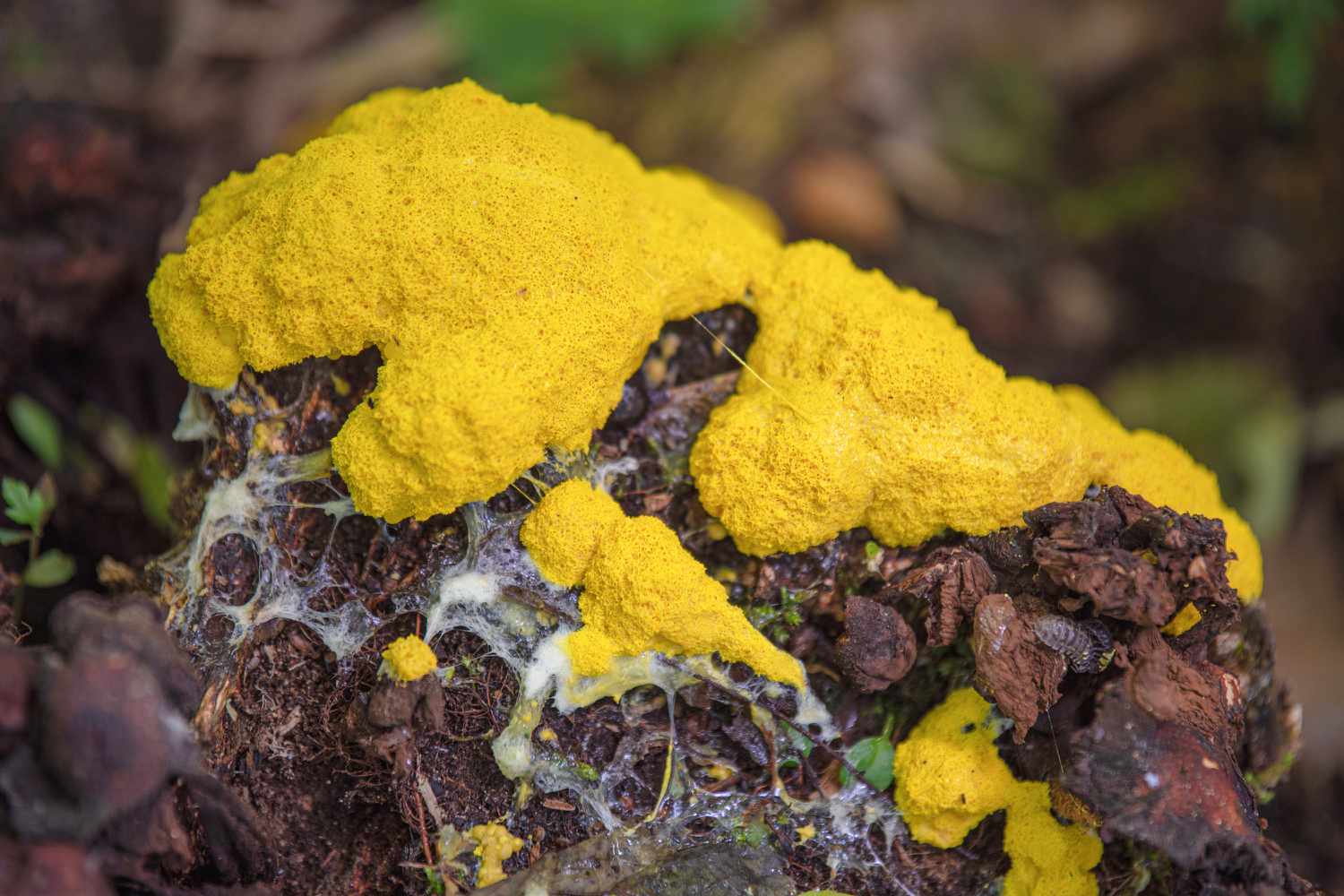
You’ve just stepped outside to admire your freshly mowed lawn… only to find a strange, yellowish blob sitting in your grass like something out of a sci-fi movie. Congratulations—you’ve met slime mold, often nicknamed dog vomit fungus. 😅
While it’s not truly harmful, slime mold is unpleasant to look at and can freak out homeowners who don’t know what it is. If you’re wondering whether you can power wash it away—you can. But you need to do it carefully to avoid damaging your turf.
Let’s explore how to safely remove slime mold from your lawn using a pressure washer, and how to keep it from coming back. 🧼🌿
🐾 What Is Dog Vomit Fungus?
Despite its gross nickname, Fuligo septica (slime mold) isn’t actually a fungus or mold. It’s a myxomycete—a type of amoeba that thrives in warm, damp, shady conditions.
You’ll typically find it:
- On mulch, especially hardwood
- In lawns with high moisture and organic matter
- After rainy spells or overwatering
- Near trees, shrubs, or shaded fences
The “vomit” stage is the reproductive phase where it becomes spongy, foamy, or crusty. Luckily, it’s harmless to people, pets, and plants. But still… ew. 🤢
✅ Can You Power Wash Slime Mold?
Yes—gently. Power washing can remove slime mold without digging up your grass or making a bigger mess if you use the right settings and method.
🧰 Equipment & Supplies You’ll Need
- Pressure washer with adjustable PSI
- 40° wide-angle spray tip
- Garden hose (for prep and rinse)
- Rake or broom
- Trash bag (to remove large pieces)
- Optional: Non-toxic lawn cleaner or enzyme solution
📏 Important: Keep PSI low—under 1,000 PSI—to avoid damaging grass blades or soil.
Browse Amazon Here For Popular Pressure Washers And Accessories
🪣 Step-by-Step: How to Power Wash Slime Mold Off Your Lawn
1. Physically Remove the Blob
Use a plastic rake, broom, or even a dustpan to scoop or rake up the visible mold. Dispose of it in a sealed bag.
2. Pre-Wet the Area
Lightly hose down the surrounding grass to prevent damage from direct pressure.
3. Apply Optional Lawn Cleaner 🧼
If you have a safe lawn product, spray it on and let it soak for a few minutes. This helps loosen residue.
4. Use Low Pressure to Wash the Area 💦
Switch to a wide spray tip (40°) and hold the wand at least 2 feet above the grass. Use quick, sweeping motions to rinse the spot and any surrounding spores.
5. Rinse With Fresh Water
After washing, rinse thoroughly with a garden hose to flush spores deeper into the soil (away from the surface).
⚠️ What NOT to Do
❌ Don’t use high PSI on lawn—it will tear up the grass and soil
❌ Don’t ignore underlying moisture issues
❌ Don’t let slime mold dry in the sun—it hardens and is harder to remove
❌ Don’t power wash without scooping up the bulk of the blob first
🧼 Prevention Tips: Keep Slime Mold From Returning
- Don’t overwater your lawn or garden
- Rake and thin out thick mulch beds
- Mow regularly to reduce moisture buildup
- Improve airflow and sunlight in shaded areas
- Replace hardwood mulch with pine bark or straw
Slime mold tends to pop up in areas with poor drainage or thick organic buildup. Drying out those spots helps long-term control.
🐕 Is It Dangerous for Pets or Kids?
Nope! While it may look alarming, slime mold is not toxic to pets or children. Still, you should wash hands or paws if contact occurs, and clean it up to avoid accidental ingestion. 🐶👶
👷 When to Call in a Pro
Call a lawn care or pressure washing professional if:
- Slime mold is reappearing frequently
- It covers large areas of your lawn or landscape
- You have delicate plants or mulch beds nearby
- You’re unsure about using pressure safely on your lawn
Pros may use soft washing or chemical-free treatments for safer removal on delicate properties.
🌿 Final Thoughts
While dog vomit fungus is more gross than dangerous, it still doesn’t belong on your beautiful lawn. With some low-pressure washing, a bit of manual cleanup, and good lawn hygiene, you can blast the blob and reclaim your turf—without damaging a single blade of grass. 💦🌱✅
Browse Amazon Here For Popular Pressure Washers And Accessories



